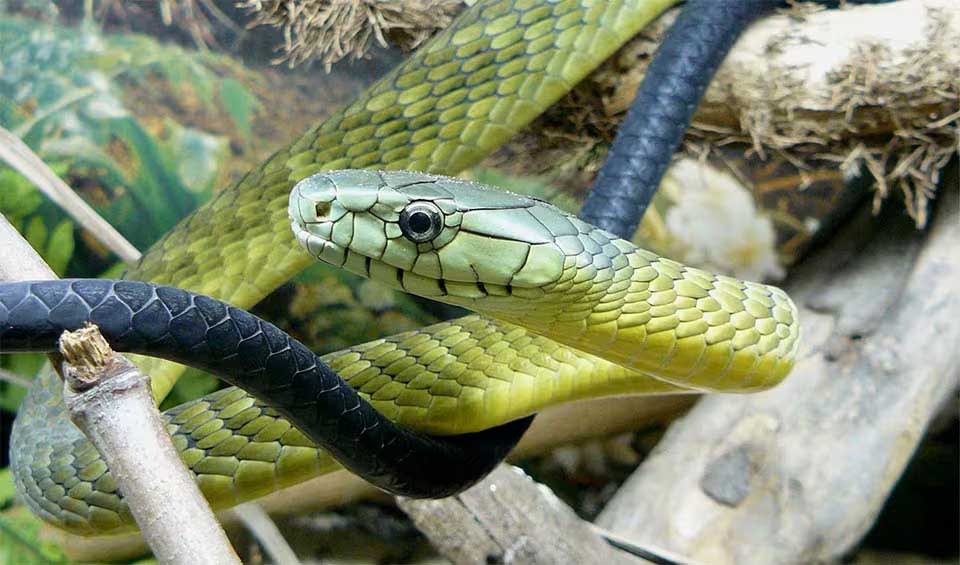A slender, fast-moving snake found in the forests and woodlands of central and western Africa. It’s one of the smaller members of the mamba family, but it’s still a snake that needs to be respected because of its speed and potent venom. This snake is named after the Scottish explorer James Sligo Jameson, who collected the first specimen.
Jameson’s mamba has a long, thin body that is well-suited for climbing trees, where it spends much of its time. The snake’s scales are smooth and have a glossy appearance, with a coloration that can range from olive green to a more yellowish-green. This coloring helps it blend in with the leaves and branches of the trees, making it difficult for both predators and prey to spot it.
One of the most striking features of Jameson’s mamba is its head, which is narrow and elongated with large, round eyes that have a sharp, alert look. The eyes have a dark stripe running from the nostrils to the back of the head, giving the snake a mask-like appearance. This keen eyesight helps the snake detect movement from potential prey or threats from a distance.
Jameson’s mamba is highly venomous, and its bite can be dangerous to humans if not treated quickly. The venom affects the nervous system and can cause serious symptoms, but there is an effective antivenom available. However, bites are rare because this snake is not usually aggressive. It prefers to avoid confrontation and will often flee or hide when it encounters humans. If it feels threatened, the mamba may raise its head and upper body off the ground, spreading its neck slightly to appear more intimidating. This is a warning to stay away, and the snake will only strike if it has no other option.
Distribution
 Angola
Angola Benin
Benin Burundi
Burundi Cameroon
Cameroon Congo-Brazzaville
Congo-Brazzaville Côte D’ivoire
Côte D’ivoire DR Congo (Kinshasa)
DR Congo (Kinshasa) Equatorial Guinea
Equatorial Guinea Gabon
Gabon Ghana
Ghana Guinea
Guinea Kenya
Kenya Nigeria
Nigeria Rwanda
Rwanda South Sudan
South Sudan Tanzania
Tanzania Togo
Togo Uganda
Uganda Zambia
ZambiaAnything we've missed?
Help us improve this page by suggesting edits. Glory never dies!
Suggest an editGet to know me
Terrestrial / Aquatic
Altricial / Precocial
Polygamous / Monogamous
Dimorphic (size) / Monomorphic
Active: Diurnal / Nocturnal
Social behavior: Solitary / Pack / Herd
Diet: Carnivore / Herbivore / Omnivore / Piscivorous / Insectivore
Migratory: Yes / No
Domesticated: Yes / No
Dangerous: Yes / No




